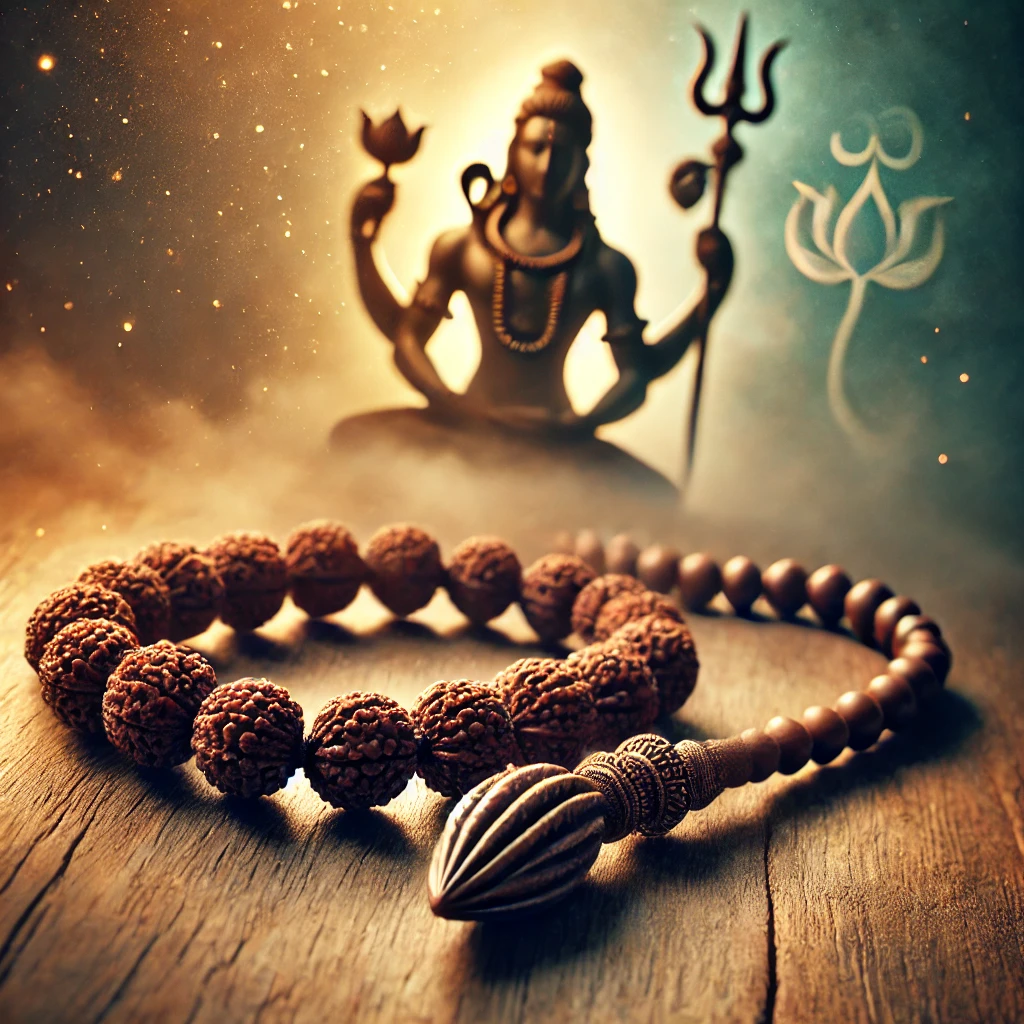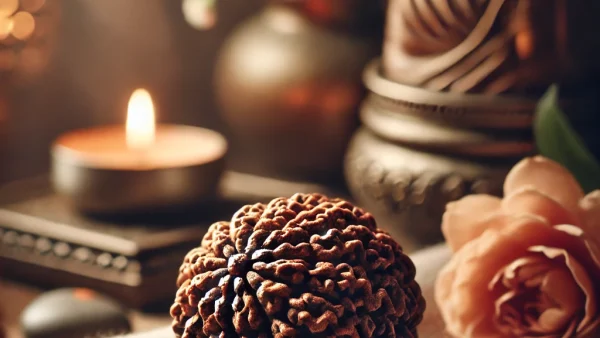In the rich tapestry of Hinduism, malas hold a significant place in spiritual practices. Whether it’s the revered Rudraksha Mala, deeply associated with Lord Shiva, or the Tulsi Mala, linked to Lord Vishnu, these sacred beads play a central role in meditation and devotion. However, for many seekers, the question often arises: Which mala should I choose? What sets the Rudraksha Mala apart from the Tulsi Mala?
In this blog, we will explore the spiritual significance, practical benefits, and symbolic meanings of these two sacred malas, providing you with insights to make an informed decision based on your spiritual needs.
The Spiritual Legacy of Malas in Hinduism
A Journey Through Time
Malas, or prayer beads, are much more than mere accessories; they are powerful tools for meditation, mantra chanting, and divine connection. From ancient sages to modern devotees, malas have been used to count repetitions of mantras, helping practitioners focus and attune their consciousness. The two most prominent malas in Hinduism are the Rudraksha and Tulsi malas, each bearing its unique spiritual essence.
Rudraksha Mala: The Tears of Shiva
Rudraksha, often referred to as the “tears of Shiva,” holds a revered place in the hearts of devotees. According to Hindu mythology, when Lord Shiva saw the suffering of the world, his compassionate tears fell to the earth and transformed into Rudraksha seeds. This profound connection to Lord Shiva makes the Rudraksha Mala a favorite among Shaivites and those who seek inner peace, strength, and spiritual growth.
The Rudraksha beads are known for their distinct grooves or faces (mukhi), each carrying its own spiritual properties. From the powerful 1 Mukhi that enhances divine consciousness to the 5 Mukhi which is often used in daily meditation, the Rudraksha Mala is a multi-faceted tool for spiritual elevation.
Tulsi Mala: The Sacred Gift of Vishnu
On the other hand, the Tulsi Mala is made from the sacred Tulsi plant, also known as Holy Basil, which is deeply associated with Lord Vishnu. In Vaishnavism, Tulsi is considered the embodiment of devotion and purity. Devotees of Vishnu, especially those who follow the path of Bhakti Yoga, often wear Tulsi Mala as a mark of their unwavering devotion.
The Tulsi plant is not only sacred but also holds great medicinal value, believed to purify the mind and body. Wearing a Tulsi Mala is said to attract divine grace, foster humility, and enhance spiritual growth, especially for those dedicated to Lord Vishnu and his avatars like Krishna and Rama.
Rudraksha vs Tulsi: Breaking Down the Differences
The Key Spiritual Benefits
Rudraksha Mala for Meditation and Protection
- Energy and Protection: Rudraksha beads are believed to hold powerful spiritual energy, protecting the wearer from negative influences and promoting mental clarity. This makes it especially beneficial for those engaged in intense meditation and spiritual practices.
- Connection with Shiva: Wearing a Rudraksha Mala enhances one’s connection with Lord Shiva, encouraging inner transformation and the dissolution of ego-based attachments.
- Health Benefits: Rudraksha beads are said to have a calming effect on the nervous system, reducing stress and anxiety. The use of different mukhis is also believed to balance the chakras and bring harmony to the body.
Tulsi Mala for Devotion and Purification
- Devotion and Surrender: Tulsi Mala represents pure devotion and is perfect for those who seek a deeper connection with Lord Vishnu through the path of Bhakti. It fosters feelings of surrender, humility, and unconditional love.
- Purification: Wearing a Tulsi Mala is said to purify both the body and the mind. Making it ideal for spiritual aspirants who wish to cleanse themselves of negative karma.
- Connection with Vishnu: For those who are devoted to Lord Vishnu, Tulsi Mala enhances spiritual practices like chanting the Hare Krishna mantra and fosters a deep sense of inner peace and divine love.
Physical and Symbolic Differences
The Material Composition
- Rudraksha Beads: Rudraksha beads are typically made from the seeds of the Rudraksha tree (Elaeocarpus ganitrus). The number of faces or grooves on each bead determines its spiritual significance, with different mukhis offering unique benefits.
- Tulsi Beads: Tulsi beads are carved from the stems of the sacred Tulsi plant. Unlike Rudraksha, which is rough and earthy in appearance, Tulsi beads have a smoother, lighter texture and are often polished for wear.
Symbolic Associations
- Rudraksha and Lord Shiva: Rudraksha Mala is considered a direct link to Shiva’s energy. Helping the wearer to align with cosmic consciousness and transcend material attachments. It symbolizes Shiva’s ascetic nature and his role as the destroyer of illusion.
- Tulsi and Lord Vishnu: Tulsi Mala is a symbol of devotion, purity, and divine grace. Aligning the wearer with Lord Vishnu’s qualities of protection, preservation, and compassion. It symbolizes surrender to divine will and the nurturing energy of Vishnu.
Practical Considerations: Choosing Your Mala
Which Mala Is Right for You?
While both Rudraksha and Tulsi malas are powerful spiritual tools. Choosing the right one depends on your spiritual goals and personal connection to the deities.
- For Meditation and Inner Strength: If you are on a path of intense meditation, self-inquiry, and spiritual growth, the Rudraksha Mala may be the best choice. It offers protection, clarity, and a direct connection to Shiva’s transformative energy.
- For Devotion and Bhakti: If you resonate more with the path of devotion, surrender, and divine love, then the Tulsi Mala is ideal. It purifies the heart, fosters humility, and strengthens your connection with Lord Vishnu and his avatars.
Health and Well-being
Both malas offer health benefits, but in different ways. Rudraksha is known for its calming effect on the nervous system, reducing stress and anxiety. Tulsi, with its medicinal properties, purifies the body and boosts immunity. Depending on your needs—whether it’s stress relief or health purification—you may lean toward one mala over the other.
Counterarguments and Considerations
Some may argue that choosing one mala over the other could limit spiritual growth. But it’s important to remember that both are potent tools for transformation. Some practitioners even wear both malas to honor the energies of both Shiva and Vishnu. Finding balance in their spiritual practices.
Aligning Your Spiritual Journey
Whether you choose the Rudraksha Mala or the Tulsi Mala, the true power lies in your devotion and intent. Both malas serve as tools to deepen your spiritual practice, align you with divine energies, and foster inner peace and growth. The choice ultimately depends on your spiritual goals and which deity you feel more connected to.
To explore a range of authentic Rudraksha malas and other spiritual tools, visit SpiritualGuru.lk. We offer a variety of high-quality malas that cater to your spiritual needs. Helping you make the most of your spiritual journey.







Leave a comment